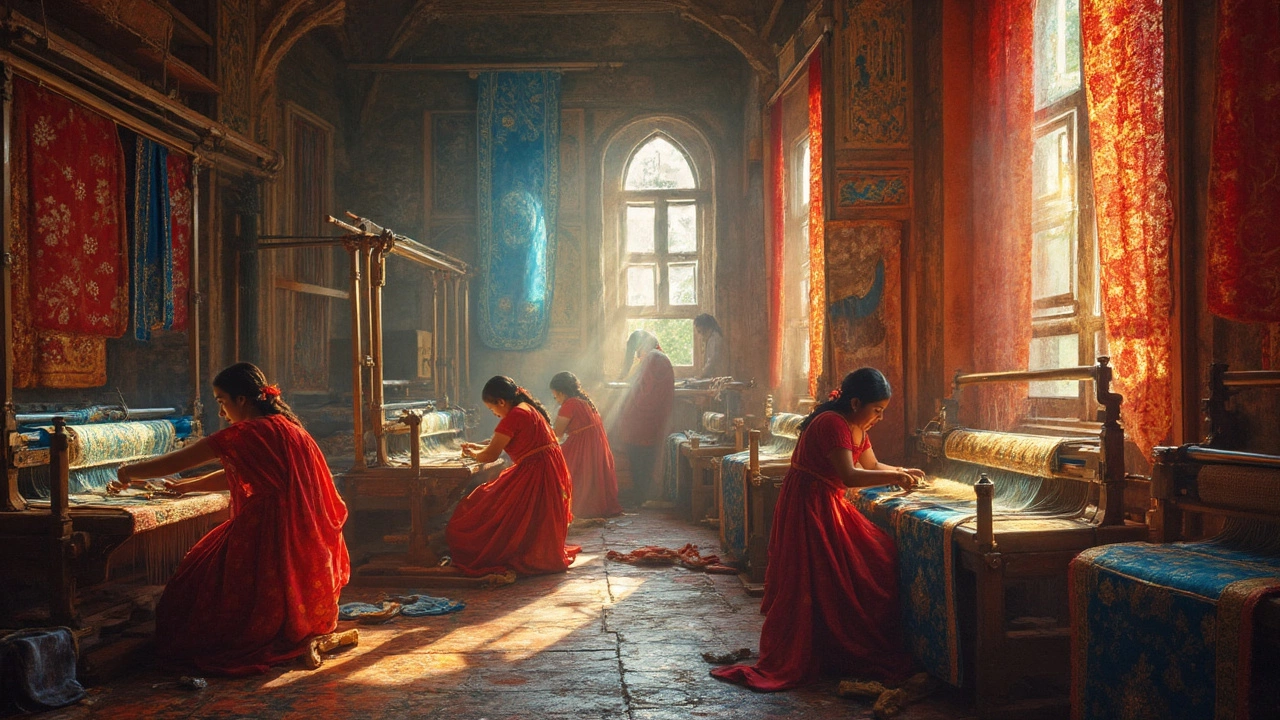- Most Profitable Small Scale Manufacturing Business Ideas Apr 6, 2025
- Expensive Fabrics in India: What Makes Them Costly? Jun 8, 2025
- Understanding the Dynamics of Small Scale Production Processes Jan 7, 2025
- Cost Analysis for Setting Up a Small Textile Manufacturing Unit in India Dec 11, 2024
- How Manufacturing Helps American Society in 2025: Jobs, Innovation, Security, Community Sep 11, 2025
Expensive Fabrics in India – What Makes Them Costly?
India is famous for cotton, silk and a huge range of textiles, but not all fabrics are cheap. Some materials command sky‑high prices because of the raw fiber, the handwork, and the brand name behind them. If you’re looking for a special outfit, a wedding drape or a high‑end interior finish, you’ll end up paying a premium. Below we break down which fabrics sit at the top of the price list, why they cost so much, and how you can pick the right one without blowing your budget.
Top Premium Fabrics You’ll Find in India
Mulberry Silk – Pure mulberry silk from Karnataka and Andhra Pradesh tops the list. Each kilogram can cost anywhere from ₹2,500 to ₹5,000, and designer‑grade silks that are hand‑woven or embroidered can reach ₹15,000 per kg. The fiber comes from silkworms fed only on mulberry leaves, which gives the fabric its smooth shine and strength.
Banarasi Brocade – This iconic weave from Varanasi mixes silk with gold or silver threads. The intricate jamdani patterns are done by hand, so a single saree can cost from ₹30,000 to over ₹2 lakhs. The price spikes when real zari (metallic) threads are used instead of synthetic substitutes.
Kashmir Pashmina – Real pashmina is sourced from the undercoat of the Himalayan goat. A genuine 100% pashmina shawl starts at ₹8,000 and can soar past ₹50,000 for hand‑carved designs or limited‑edition pieces. The scarcity of the fiber and the cold‑climate processing add to the cost.
Hand‑loom Khadi – While regular khadi is affordable, the hand‑loom versions spun from organic cotton or silk blends and finished with natural dyes can command ₹1,200 to ₹5,000 per meter. The labor‑intensive spinning and weaving keep the price up.
Designer Velvet & Velvet Jacquard – Velvet woven with silk or high‑grade cotton, often featuring intricate jacquard patterns, is used for high‑end upholstery and fashion. Expect prices of ₹4,000 to ₹10,000 per meter depending on the pattern depth and backing material.
How to Choose and Buy High‑End Textiles
First, know what you need. If it’s a wedding garment, silk and brocade are traditional choices. For a living‑room sofa, velvet or high‑quality cotton blends work better. Look for certifications – many reputable Indian mills carry the “Fibre2Fashion” or “Handloom Mark” that confirm authenticity.
Second, compare samples. Ask the seller for a swatch and check the hand‑feel, sheen, and weight. Real mulberry silk feels cool and smooth; synthetic substitutes feel plasticky.
Third, factor in extra costs. Shipping, customs duties and handling can add 10‑20% to the final price, especially for delicate fabrics that need special packaging.
Fourth, buy from trusted sources. Established retailers in Delhi’s Janpath, Mumbai’s Bandra, or online platforms that showcase maker profiles help you avoid cheap knock‑offs.
Finally, think about care. Expensive fabrics usually need dry cleaning or gentle hand‑wash with neutral pH detergents. Budget for maintenance to keep the material looking its best for years.
In short, India’s luxury textiles blend centuries‑old craftsmanship with rare fibers, which explains the high price tags. Knowing the key fabrics, their price brackets and the right buying steps lets you enjoy the beauty without getting surprised at the bill.
Expensive Fabrics in India: What Makes Them Costly?
- Aarav Sekhar
- Jun 8, 2025
Which fabrics top the price charts in India, and why do they cost so much? This article breaks down the most expensive textiles, highlighting what sets them apart. You'll learn what drives the price—whether it's rare materials, skilled craftsmanship, or tradition. Discover which regions in India are hotspots for luxury fabric making. Get practical tips if you're thinking of buying or investing in high-end cloth.
